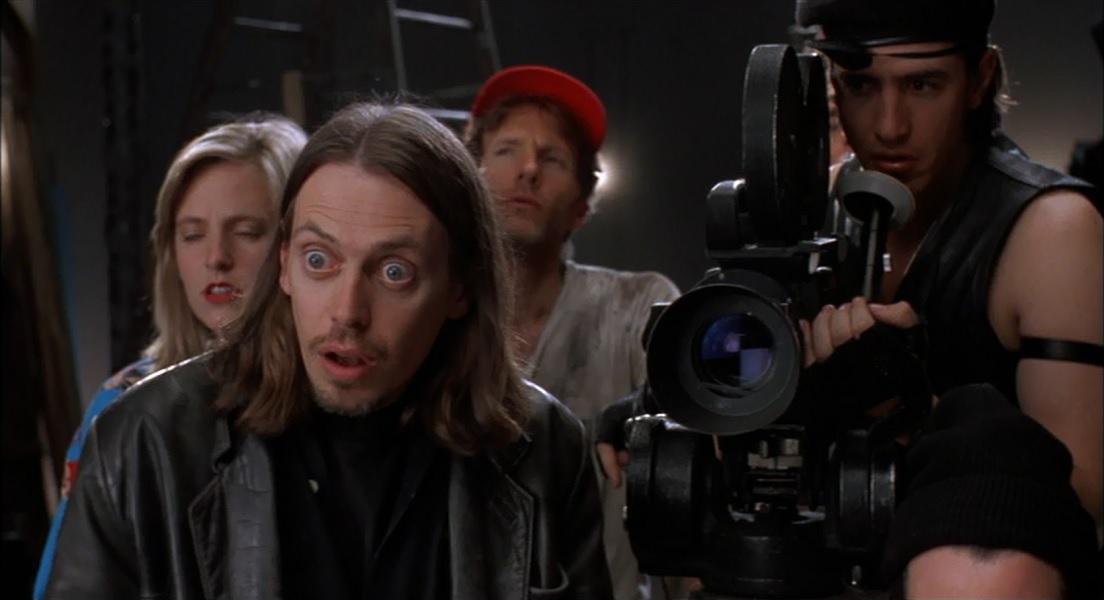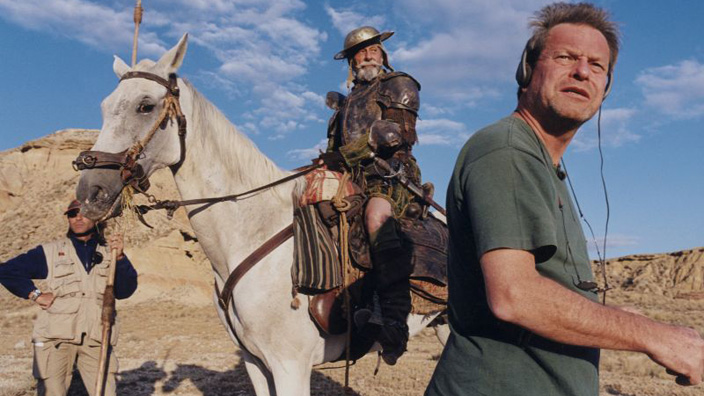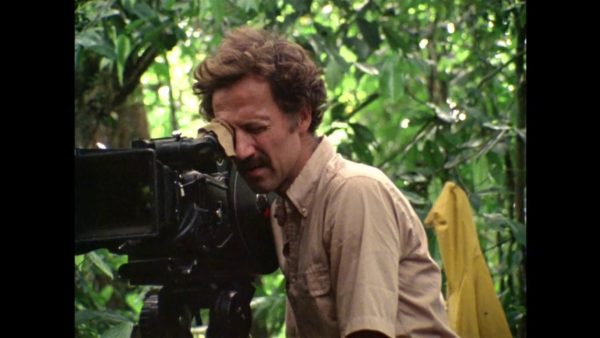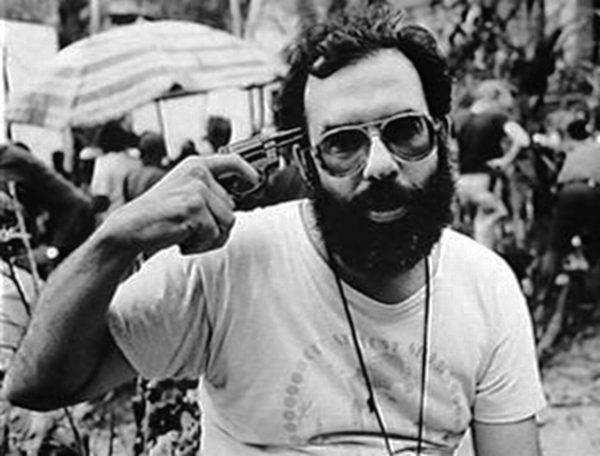10 Best Films About Making Films
Do you just love seeing how things work behind the scenes of a movie? If you’re like me, you enjoy finding out more about how films were made. Indeed, sometimes the story of the production is more gripping than the film itself.
Every film below is a glimpse into the creative process. But there’s also something of an epic struggle against the odds about making any film. One person with a vision fighting a seemingly endless series of obstacles.
A film set is the perfect place for egos to clash. Film production has been described as trying to lay the track before an oncoming train, before the train runs out of track. So they can often make the perfect set up for knife-edge drama.
Below I’ve listed my best 10 films about the filmmaking process. Some of them are documentaries and some of them are fictional. But even documentaries are one person’s version of events – is there really much difference between fact and fiction?
As Jean-Luc Godard said, “If you want to make a documentary you should automatically go to the fiction, and if you want to nourish your fiction you have to come back to reality.”
1. The Disaster Artist (2017)
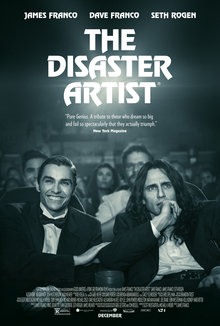 Over 10 years ago, I started to see scenes from a movie called The Room being shared online. On further investigation, I discovered this was a DIY feature film production where the movie ended up so bad it was awesome. Meanwhile, angry crew were sharing their experiences of the nightmare production experience.
Over 10 years ago, I started to see scenes from a movie called The Room being shared online. On further investigation, I discovered this was a DIY feature film production where the movie ended up so bad it was awesome. Meanwhile, angry crew were sharing their experiences of the nightmare production experience.
Before long, The Room gathered a huge following. Fans of the film would attend special screenings of the film, joining in with some of the memorably bad dialogue.
The Disaster Artist is a 2017 American biographical comedy film produced and directed by James Franco. The film is based on the book The Disaster Artist: My Life Inside The Room, the Greatest Bad Movie Ever Made written by Greg Sestero and Tom Bissell which chronicles the unlikely friendship between budding actors Tommy Wiseau and Sestero, as they proceed to make one of the worst films ever.
James Franco makes the larger than life character of Wiseau compelling, well supported by his brother Dave Franco. What’s fascinating is that a film considered terrible has spawned a film which is generally well-received, from a book with a ton of 5 star reviews.
Perhaps it’s worth remembering it’s the story you create by living which is the real story. A reason to push ahead with our own crazy dreams of making a movie.
Find The Disaster Artist on Amazon.
2. Ed Wood (1994)
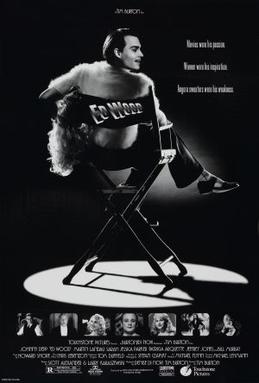 Ed Wood was the Tommy Wiseau of 1950s B-movie production. Wood’s films remained largely obscure until he received the Golden Turkey Award for Worst Director of All Time in 1980. Like with Wiseau, it was the ridicule that led to his recognition.
Ed Wood was the Tommy Wiseau of 1950s B-movie production. Wood’s films remained largely obscure until he received the Golden Turkey Award for Worst Director of All Time in 1980. Like with Wiseau, it was the ridicule that led to his recognition.
Rather than make one infamous cult film, however, Wood directed several low-budget science fiction, crime and horror films. With dubious aesthetics and special effects which were bad even for the 1950s, Wood’s films depicted idiosyncratic stories such as in Glen or Glenda (1953), Jail Bait (1954), Bride of the Monster (1955), Plan 9 from Outer Space (1959), Night of the Ghouls (1959) and The Sinister Urge (1960).
But you can only admire the fact he kept going, seemingly oblivious to their faults. Personally, I wouldn’t call them faults anyway. Often our goal as filmmakers is to create something so extraordinary it gets noticed. Ed Wood’s films certainly achieved that.
This film is a biopic by Tim Burton and starring Johnny Depp. The two have worked together on several projects before, but here we find them at their best. There’s some character similarities to their previous collaboration, Edward Scissorhands (1990).
The film is a sympathetic version of Ed Wood’s film career, as Burton himself admitted. Like Edward Scissorhands, it has a fairytale feel to it, all shot in dreamy black and white. Burton said he wanted to show the story through Ed Wood’s eyes. However, is it not more likely we’re seeing the world through Burton’s eyes?
In one scene in a bar, Ed Wood meets his filmmaking hero, Orson Welles. And who knows, in some alternative universe, their roles might be reversed and it’s Wood who’s hailed the genius. “Visions are worth fighting for…”
3. Living In Oblivion (1995)
A day in the life of a movie director trying to fulfil his vision against everything you would normally expect to go wrong on a low-budget film set. This film is entirely fictional, so expect it to contain more truthful insights than any of the films based on real events.
Writer-director Tom Dicillo takes a satirical swipe at the process of making an independent film. Anyone who has worked on a film set before will get the in-jokes and observations. Anyone who has directed one will have full understanding of the frustrations suffered by Nick Reve (played by Steve Buscemi).
The film did poorly at the box office, however, probably because the film’s appeal is mostly to other filmmakers. Also, being made at a time when low-budget films were still mostly shot on actual film. Even so, most of the filmmaking troubles still apply showing that digital hasn’t changed much, except to open up this experience to more people.
DiCillo was inspired to make this film after the frustrations of making his debut feature Johnny Suede. Living In Oblivion is divided into three parts, each section depicting a moment in the filmmaking process. Although the first section is probably the best, the whole film is a perfectly aimed satire.
Watch Living In Oblivion on Amazon.
4. Lost in La Mancha (2002)
“Fuck, fuck, fuck, fuck! We are so fucked. Fu-u-u-u-u-ck!” Terry Gilliam
Python animator and one-of-a-kind film director Terry Gilliam spent over 30 years trying to make his film version of Don Quixote – the most influential work of literature from the Spanish Golden Age and the entire Spanish literary canon. At the beginning of the century, documentarists Keith Fulton and Louis Pepe were there to witness the awe-inspiring collapse of Gilliam’s first attempt.
Their gripping fly-on-the-wall observation, hilarious and heartbreaking at the same time, shows Gilliam’s dream project disintegrating like a slow-motion car crash. I won’t spoil events by mentioning any of things that go wrong, in case you haven’t already heard this story.
What it shows you is even the best known, well-heeled directors can find themselves at the mercy of fate’s cruel hand. Sometimes there’s simply nothing you can do to avoid the pitfalls awaiting you, without the benefit of hindsight. And watching Gilliam’s disaster unfold makes us feel better about are own filmic mishaps.
A guilty pleasure, perhaps. But we don’t have to feel too bad, now, as Gilliam finally achieved his dream and finally shot his version of Don Quixote. Although, even that production wasn’t without it’s bizarre final twist in the tale.
Watch Lost in La Mancha on Amazon.
5. 8½ (1963)
“8 1/2 is probably the most potent movie about film-making…” Derek Malcolm, Guardian.
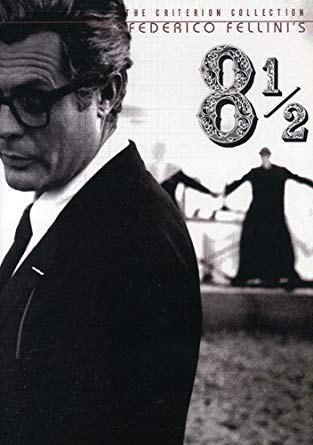 8½ was the eighth and half film by Federico Fellini, by his own accounting. Ever found yourself stuck for an really powerful title for your next movie? Simply count how many films you’ve made already and add 1. If it’s good enough for the master of Italian cinema…
8½ was the eighth and half film by Federico Fellini, by his own accounting. Ever found yourself stuck for an really powerful title for your next movie? Simply count how many films you’ve made already and add 1. If it’s good enough for the master of Italian cinema…
As you might have guessed, the Italian maestro’s film is about himself and filmmaking. But French critic Christian Metz wrote, “It is not only a film about the cinema, it is a film about a film that is presumably itself about the cinema; it is not a film about a director, but a film about a director who is reflecting himself onto his film.”
This is one of the most tightly structured films Fellini ever made, with a meticulously constructed screenplay. But all the images (real, remembered, invented) come together into a story about the flailings of a filmmaker without a plan – a confused director who has no idea what he wants to do next.
Find Fellini’s 8 1/2 on Amazon.
6. Day For Night (1973)
Ten years after Federico Fellini made his film about filmmaking, Francois Truffaut had a go. Films about filmmaking are often about the excitement and drama of the shooting process. Directors shouting “action!” and crew running around trying to get everything done in time. Truffaut’s Day For Night more about the family the filmmakers become while filming. Not reading between the lines, but revealing between the takes.
“I’d give up a guy for a film, but I’d never give up a film for a guy.” Nathalie Baye in Day For Night
Like Fellini, Truffaut appears as the director of the fictional film, Je vous présente Paméla. He plays Ferrand, the film’s director. He’s a man much like Truffaut, who compares the process of film-making to “a stagecoach journey into the far west. At the start you hope for a beautiful trip. But shortly you wonder if you will make it at all.”
Look out for British author, Graham Greene, who makes an appearance as an insurance advisor. He’s credited as Henry Graham and the story goes that Truffaut didn’t realise he was the famous author, believing him to be a retired English businessman living in the South of France.
But what could be more inspiring to us as aspiring filmmakers than seeing Truffaut himself playing a director in love with film?
Find Truffaut’s Day For Night on Amazon.
7. The Filmworker (2017)
Filmworker is an American documentary directed by Tony Zierra about Leon Vitali and his relationship with legendary auteur Stanley Kubrick. Vitali was a successful British actor with a promising future when he played Lord Bullingdon in Kubrick’s historical drama, Barry Lyndon. After falling under Kubrick’s spell, the actor pretty much gave up acting to become his assistant.
This film is as revealing about the workings of Kubrick’s mind as about Vitali. The actor become Kubrick’s right hand man, wanting to learn the craft of filmmaking from the master himself. And who wouldn’t?
But how Vitali becomes permanently drawn into Kubrick’s world is troubling as well as fascinating. Beginning his apprenticeship on the set of The Shining, Vitali spent the next 30 years helping Kubrick to obsess over his famed attention to detail: colour grading, sound design, casting, DVD box design and everything else.
Kubrick’s obsessions became Vitali’s obsessions. Their minds in some admirable but disturbing way linked, as it was surely in part due to Kubrick’s bullying. In the end, Vitali’s understanding of Kubrick’s mind was so true, he would even go on to finish Eyes Wide Shut when Kubrick died before its completion.
Find The Filmworker on Amazon.
8. Burden of Dreams (1982)
Talking of obsession…
Some behind the scenes movies are nothing more than lightweight complimentary material only there to help boost the film’s PR and give the fans a little extra. Some making of movies surpass the subject movie as a work of cinema. Les Blank’s Burden of Dreams might just be one of those.
The movie in the movie was Werner Herzog’s Fitzcarraldo, shot on location deep in the rainforests of South America.
The film Fitzcarraldo is inspired by the exploits of Carlos Fitzcarrald, a Peruvian rubber baron and the oldest son of an Irish-American sailor. Determined to find a way to transport rubber out of the Madre de Dios region, Fitzcarrald forced native workers to dismantle and transport a ship over a mountain during the turn-of-the-20th-century rubber boom in the Amazon Basin.
He died at the age of 35, going down with his ship. Still, they named a province of Peru after him.
The making of Herzog’s film of his exploits turned out to be an incredible ordeal, which involved moving a 320-ton steamship over a hill. Bear in the mind, the original ship only weighed 30 tons.
Meanwhile, similar to Gilliam’s Lost in La Mancha, everything that could go wrong went wrong. When actor Jason Robards went down with amoebic dysentery after 40% of the filming had been done, his replacement was Klaus Kinski. The new actor’s behaviour would have taxed a saint.
On the bright side, Herzog’s film did eventually get made. I’d recommend watching both films, with Fitzcarraldo as the warm up act.
Find Burden of Dreams on Amazon.
9. Hearts of Darkness: A Filmmaker’s Apocalypse (1991)
“The horror” Colonel Walter E. Kurtz (Marlon Brando), Apocalypse Now
Next up for the on location passion project shooting ordeal is Francis Ford Coppola, all filmed by his wife Eleanor Coppola. They’re still married, so you can guess this wasn’t a character assassination.
During her early film career, Eleanor Coppola often accompanied her husband on his film shoots. In 1976, she began documenting the making of Coppola’s film Apocalypse Now (considered by many to be one of the greatest war films ever made). First, there was a memoir Notes on the Making of Apocalypse Now released in 1979, detailing the hectic filming process, including the near collapse of the film’s production.
Shooting was troubled by monsoons, large cost overruns and cast and crew health problems. One time, the Philippine government tried to rent them the same helicopters it was using to fight rebels ten miles away. Brando showed up having not read the script, insisting on being shot mostly in darkness and wanting to discuss his lines.
He was being paid $1m a week.
Hearts of Darkness was written and directed by Fax Bahr and George Hickenlooper and uses documentary footage shot by Eleanor. Included are contemporary interviews with both Coppolas, plus actors Martin Sheen, Frederic Forrest, Robert Duvall, Dennis Hopper, Timothy Bottoms and Laurence Fishburne.
“We were in the jungle, there were too many of us, we had access to too much money, too much equipment, and little by little we went insane.” Francis Ford Coppola, in Hearts of Darkness.
Find Hearts of Darkness on Amazon
10. That Moment
That Moment is an amazingly candid and engaging 72 minute documentary about the making of Paul Thomas Anderson‘s 1999 epic Magnolia. The film has been described as a snapshot of the American independent film industry at the end of the last century. This was a time when a newish indy director could raise $37 million to shoot an arthouse ensemble drama.
This is a very in-depth documentary, following a very over-worked Anderson through a gruelling 80+ days of shooting. It uses a fly-on-the-wall approach to cover many aspects of production, from production management and scheduling, to music direction to special effects. There’s a glimpse into Anderson’s motivation and directing style. For example, during pre-production the films Network (1976), as well as Ordinary People (1980) are screened.
That age may now sadly have passed. However, we can all still learn from a highly successful filmmaker – who is both a screenwriter and director. And the whole doc is available via YouTube below:
Read next: 10 Best Films Funded by the Director
Eager to learn more?
Join our weekly newsletter featuring inspiring stories, no-budget filmmaking tips and comprehensive equipment reviews to help you turn your film projects into reality!
As an Amazon Associate I earn from qualifying purchases.
Simon Horrocks
Simon Horrocks is a screenwriter & filmmaker. His debut feature THIRD CONTACT was shot on a consumer camcorder and premiered at the BFI IMAX in 2013. His shot-on-smartphones sci-fi series SILENT EYE featured on Amazon Prime. He now runs a popular Patreon page which offers online courses for beginners, customised tips and more: www.patreon.com/SilentEye


